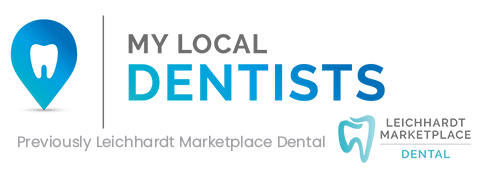Cracked Tooth Treatment: Causes, Symptoms, and Solutions

If you’ve been experiencing pain in your mouth that comes and goes, it could be a cracked tooth. It’s not something to ignore, as the crack can worsen over time.
What Causes Cracked Teeth?
Your teeth are strong, but they aren’t invincible. Many things can put your teeth at risk for cracks, such as grinding or clenching your jaw, eating hard food items like nuts or ice cubes, using your teeth as tools, such as opening packages, and being hit in the face.
The natural ageing process causes a gradual weakening of the tooth enamel, which can put older adults at risk for dental damage. However, this heightened vulnerability largely depends on how well you care for your teeth and mouth.
If you have a pre-existing dental issue, such as a large filling or weakened enamel from frequent acid exposure, this could also increase your risk of developing a tooth crack.
Types of Cracked Teeth
Not all cracks are created equal. Here are the common types dentists look for during a cracked tooth treatment evaluation:
Craze lines
Craze lines, while not classified as fractures, are the least serious type of tooth cracks and are usually found in adults. These tiny hairline cracks form on the enamel layer of your teeth but do not reach your gums.
Craze lines usually require no treatment since they are a superficial concern. Craze lines typically don’t cause any discomfort and could only threaten your oral health if they worsen and reach the dentin of teeth.
To make matters worse, an uneven bite, grinding teeth, biting nails, or chewing ice can all put pressure on the enamel, which may eventually lead to craze lines.
Determining whether the crack is confined within just the enamel might be difficult for most; however, your Leichhardt dentist will assess both signs and symptoms before performing tests that allow them to diagnose this condition correctly.
Fractured cusp
A fractured cusp occurs when a tooth’s chewing surface fragments, commonly in teeth with large dental fillings. The break may reach the gumline or even result in more serious damage to the soft tissue, the pulp of the tooth, which contains nerves, blood vessels, and connective tissue, but it usually won’t cause any pain.
In some cases, this might necessitate root canal treatment if it exposes their pulp; however, more often than not, just a new filling or crown will suffice for repairment purposes – thereby allowing you to salvage your affected tooth!
Cracked teeth
Cracks that extend from a tooth’s biting surface down to or beneath its gum line are often incomplete, meaning they do not divide into two. Fortunately, with the proper care, these cracks can be salvaged and restored.
Cracks in teeth can cause irreversible damage to the fragile pulp, often resulting in root canal treatment or tooth extraction. Here’s where it gets tricky; depending on their location and severity, treating cracked teeth can be intricate, making long-term success difficult—if not impossible—to foretell.
These breaks also necessitate immediate attention to salvage your pearly whites from being lost forever!
Split teeth
When a crack progresses from the exterior to the root of a tooth, it is considered a split tooth. This fracture type is often too significant for repair, so extraction is usually required.
However, in certain circumstances with multi-rooted molar teeth, part of the tooth can still be salvaged by extracting the affected side, performing a root canal on the rest, and crowning it.
Vertical root fractures
A vertical root fracture typically occurs in teeth with a previous root canal treatment. It begins at the tooth’s base and goes upward towards its chewing surface.
Nevertheless, this condition may be unnoticeable for many years due to minimal pain or no symptoms.
Even so, unless a professional dentist manages to save part of your tooth by extracting its fractured root, extraction will become necessary, as restoring a vertical root fracture without surgery is impossible.

Cracked Tooth Syndrome
Cracked tooth syndrome is a painful tooth fracture that often escapes detection on X-rays due to its bevelled shape. The crack can occur in any part of the tooth and is commonly seen in back molars because they bear most of the force when chewing food.
Since this condition may only produce mild pain, it can be deceptive and go undetected in one’s mouth. Typically, a professional dental exam is needed to diagnose the cause of your pain and dental history, as it might be due to other issues or even a crack that’s too small to be seen on an X-ray.
What Causes Cracked Tooth Syndrome?
Cracked tooth syndrome is caused by trauma to the teeth and certain habits. Chewing on hard objects, such as ice or popcorn kernels, can weaken the enamel and cause microfractures in the teeth, which later turn into cracks.
Teeth grinding at night can also contribute to CTS; this common condition weakens the tooth structure, leading to tooth loss. In addition, ageing and general wear and tear can weaken enamel and make it more prone to cracking.
Cracked Tooth Symptoms
A cracked tooth can lead to pain and sensitivity and sometimes cause unpleasant symptoms, such as earaches, headaches, and even a sore jaw. Recognising the signs of a broken tooth is essential to treat it before infection can occur.
In some circumstances, you may experience sensitivity when consuming hot or cold food or liquids, while the fracture will be evident in others. Irregularities with your bite may also indicate that you have damaged a tooth.
If any of these symptoms apply to you, seeing a dentist as soon as possible is best for professional advice and treatment.
Cracked Tooth Diagnosis
Your dentist can diagnose a cracked tooth by closely examining the area with various tests. These may include an X-ray to determine the severity of the crack or biting down on gauze to locate sources of irritation and sensitivity.
Your Leichhardt dentist may also measure your gum line to determine if any shifts have occurred due to the tooth’s cracking.
What Are The Treatment Options?
The type of treatment will depend on how severe the crack is and where it is located with other structures like nearby fillings and gums.
Dental bonding
Minor cracks can often be addressed with bonding material or by covering them with a crown or porcelain or ceramic cap, like veneers, if necessary.
Fillings
Dental filling materials can strengthen the tooth and seal off any exposed nerve endings.
Root canal therapy
In more severe cases, root canal therapy could be required before a crown is applied to the tooth to shield it from additional harm.
Tooth extraction
Extraction may be recommended in cases where too much damage has been done. However, that can be sorted by a dental implant that can replace your missing teeth with a new, natural look.
Protecting Your Tooth After Treatment
Once your cracked tooth has been treated, it’s essential to protect it from future damage:
- Avoid chewing hard or sticky foods
- Should you grind your teeth, wear a nightguard.
- Maintain excellent oral hygiene
- Schedule regular dental checkups to catch any early signs of cracking
Following these steps supports long-term success after cracked tooth treatment.
Prevention Tips
Prevention is always better than cure. You can lower your risk of needing cracked tooth treatment by:
- Steer clear of bad habits like using your teeth as tools or eating ice.
- Using a mouthguard during sports
- Managing stress to reduce jaw clenching or grinding
- Seeing your dentist regularly for preventive care
Don’t Ignore the Signs—Seek Treatment Early
A cracked tooth should not be ignored, as it can cause pain and other issues if left untreated for too long. Depending on their severity and location within your mouth, cracks can be treated relatively easily with bondings or crowns.
Time is critical when diagnosing and treating a cracked tooth; swift action leads to optimal results.
Cracked Tooth Treatment in Leichhardt
If you’re experiencing discomfort or suspect a crack, don’t delay—call My Local Dentists at (02) 9171 0840 for a professional diagnosis and treatment. With proper care from our experienced dentists, you’ll be able to get back to enjoying your smile in no time!
We are located at Shop 48, Leichhardt Marketplace Shopping Centre, 122-138 Flood Street in Leichhardt.
